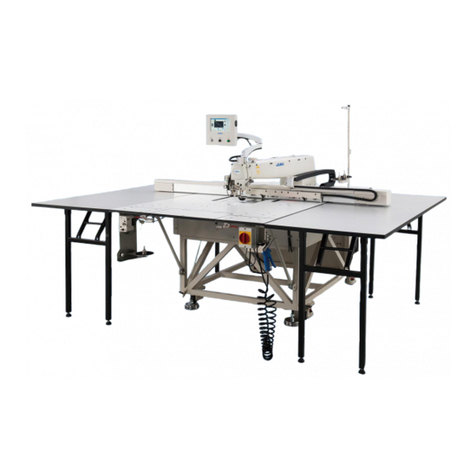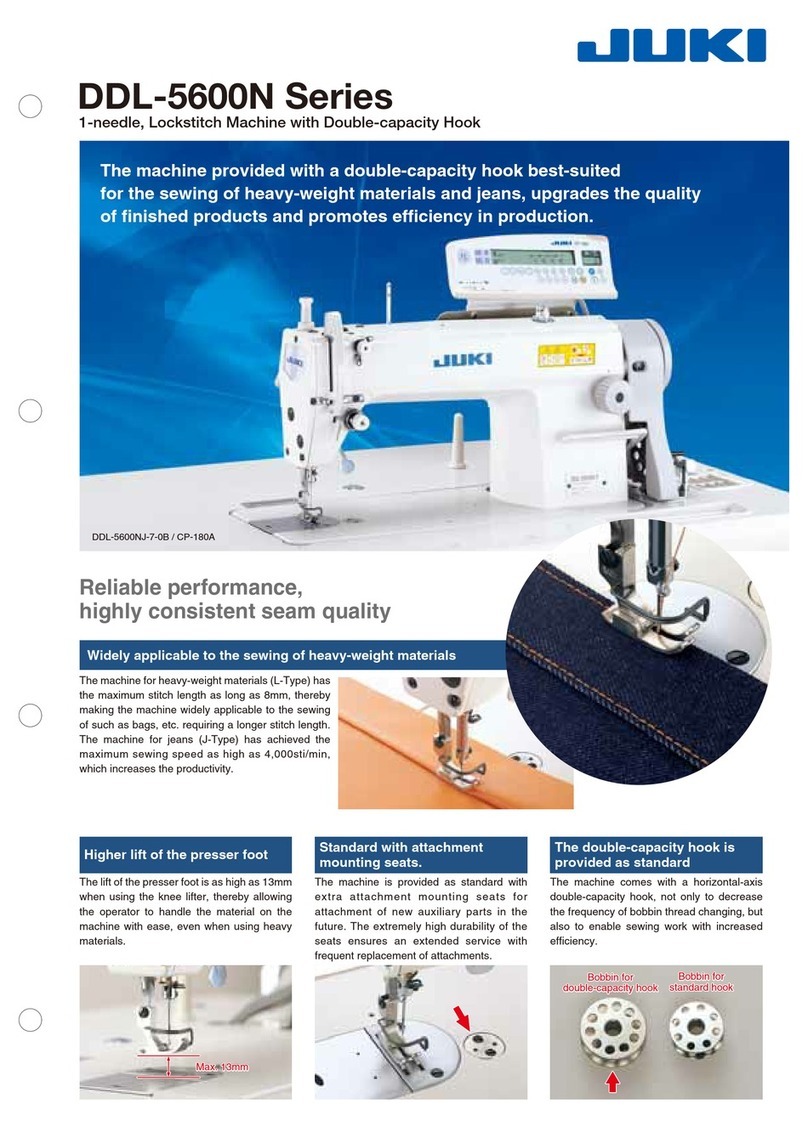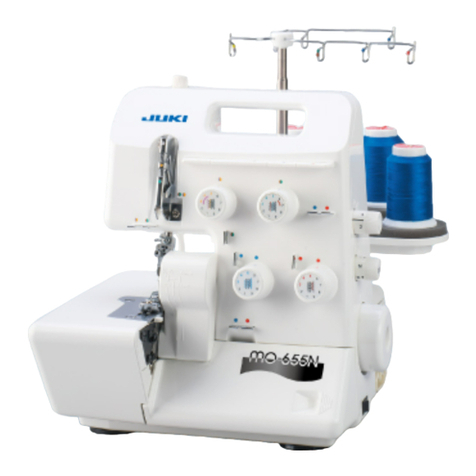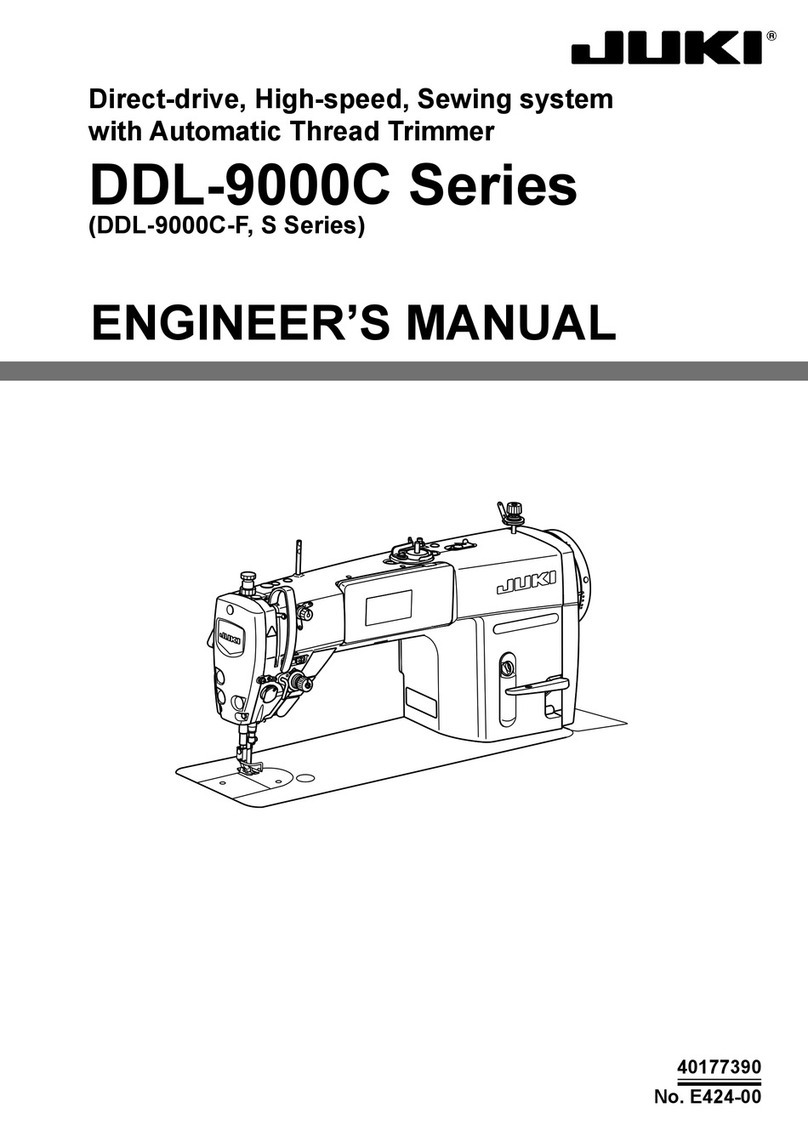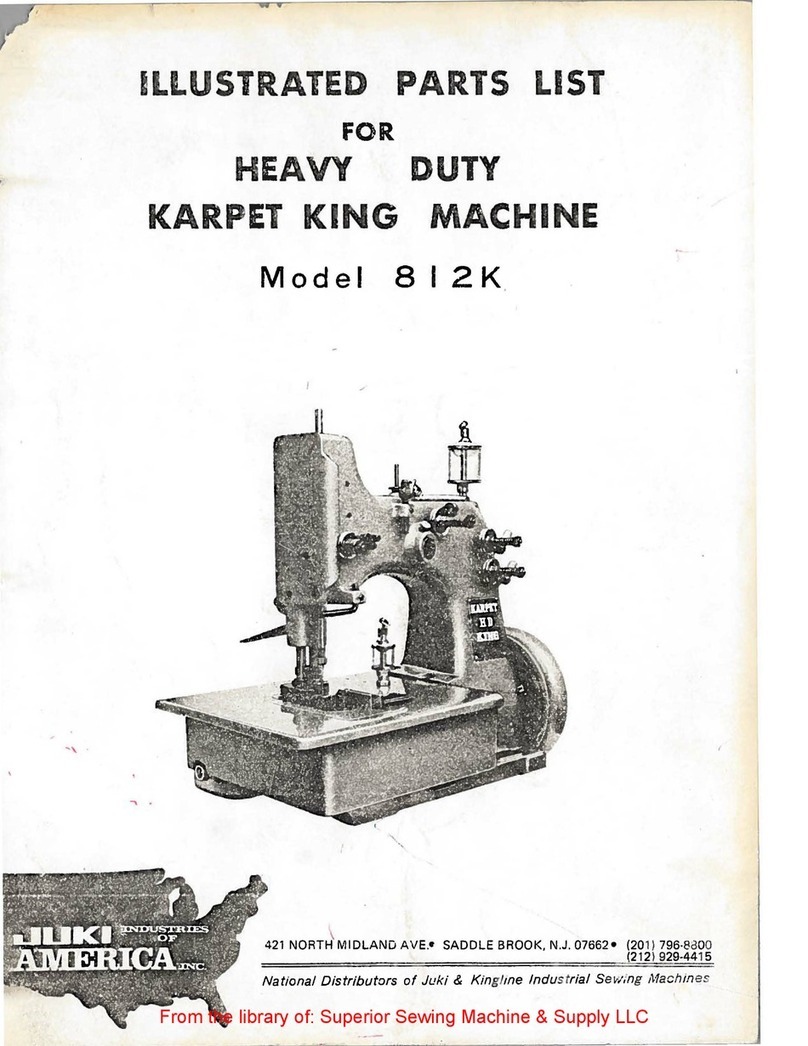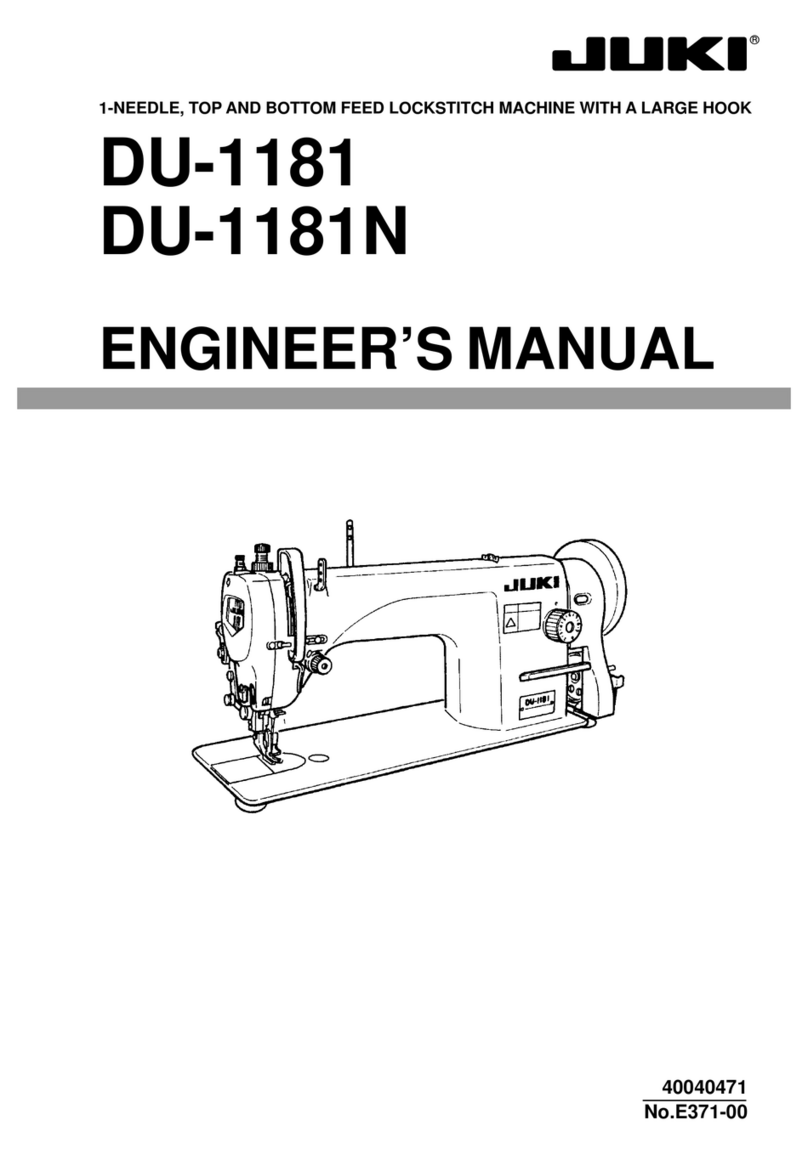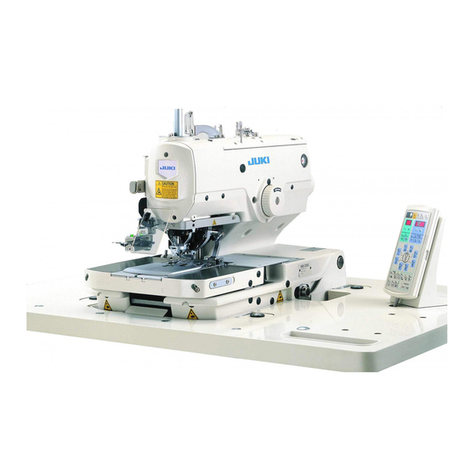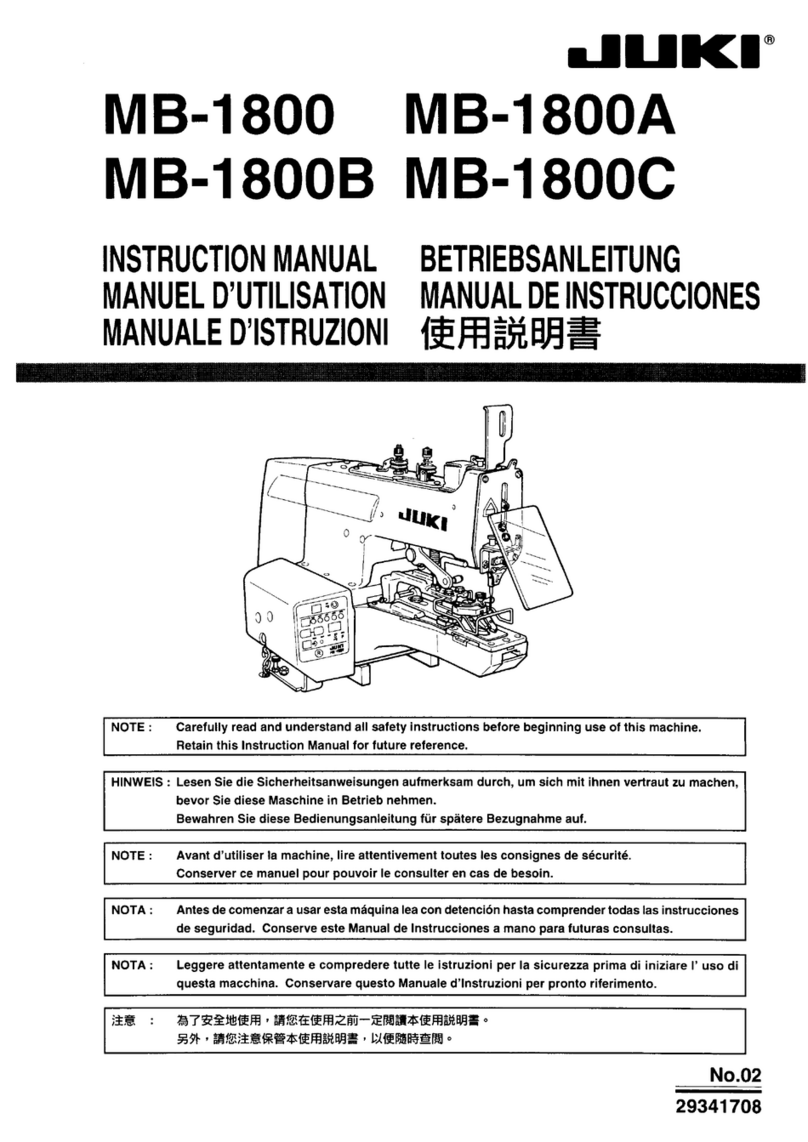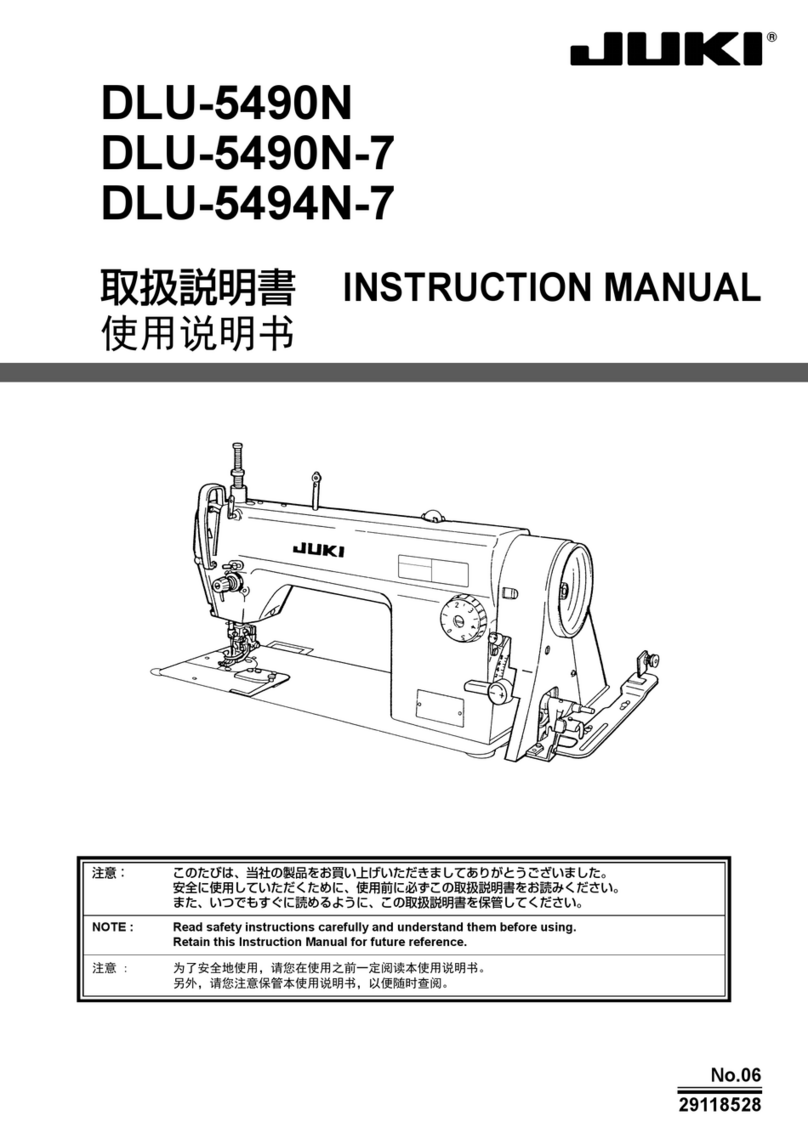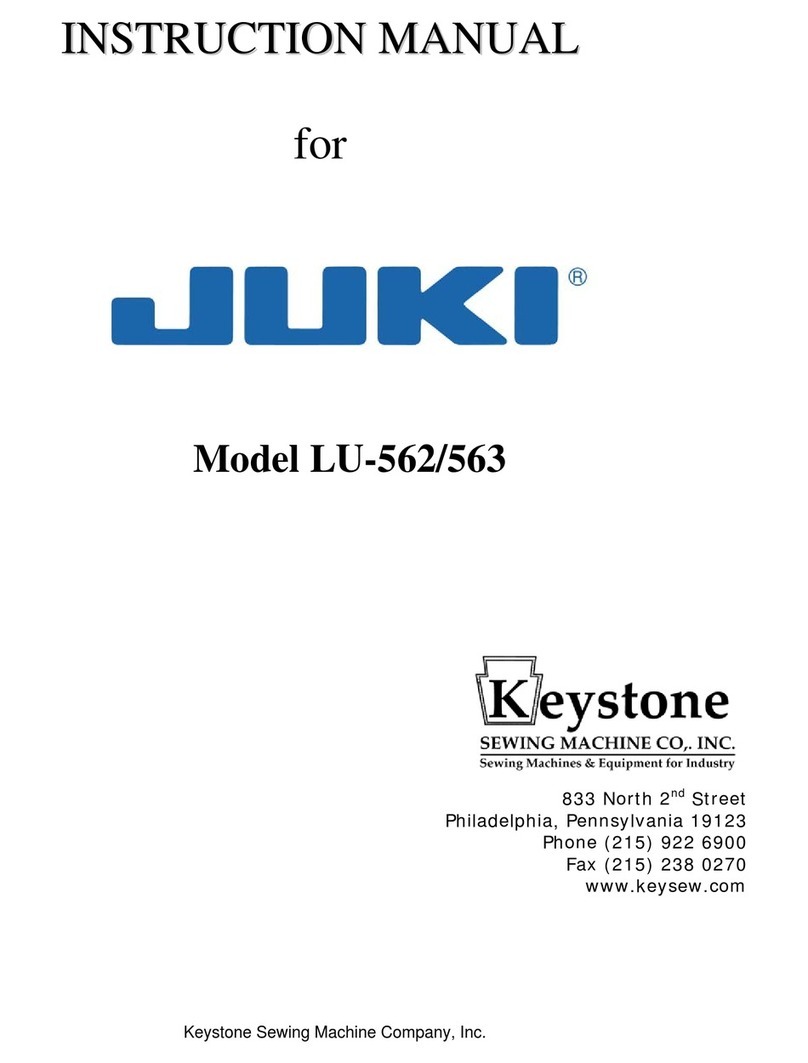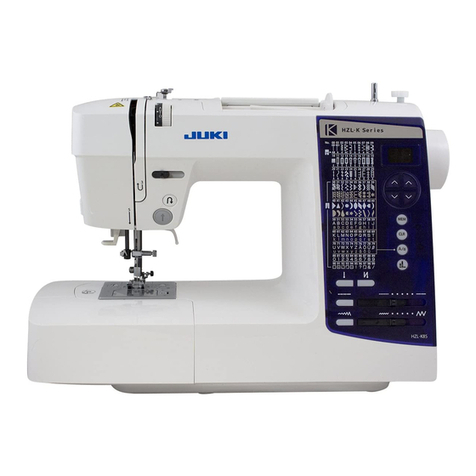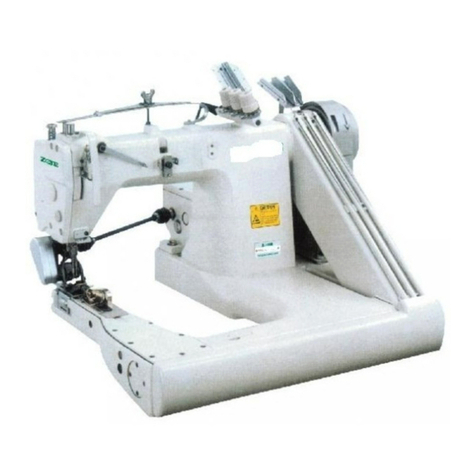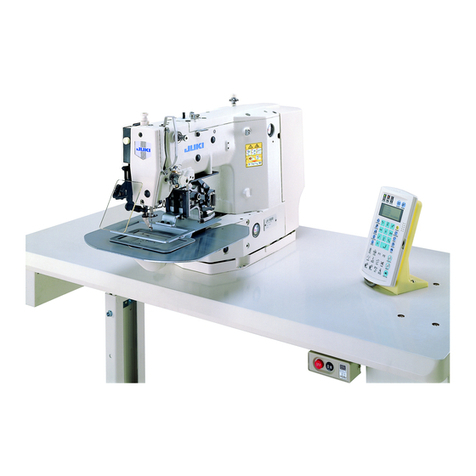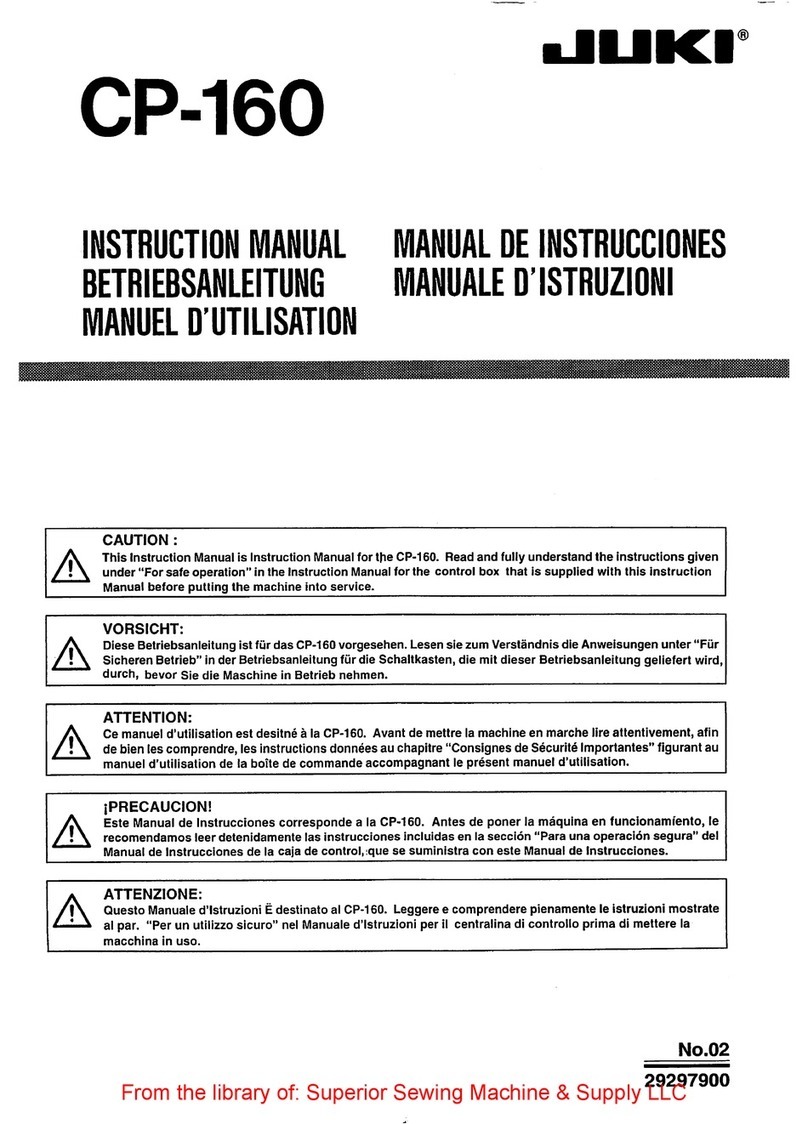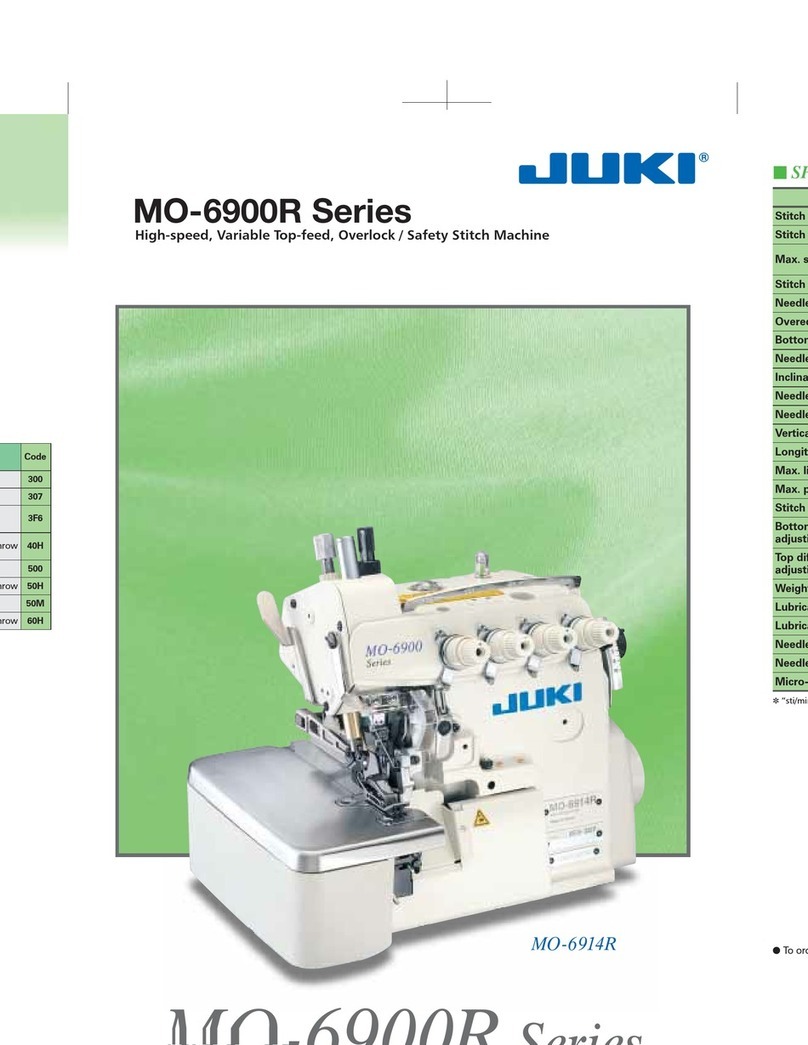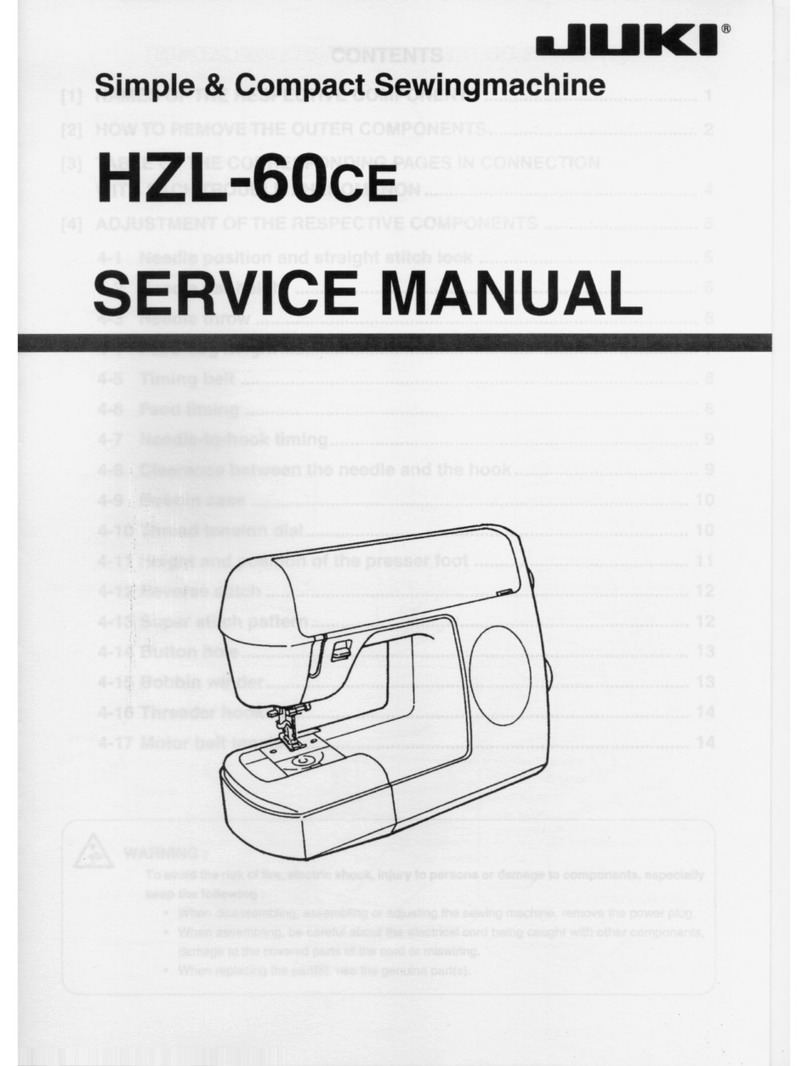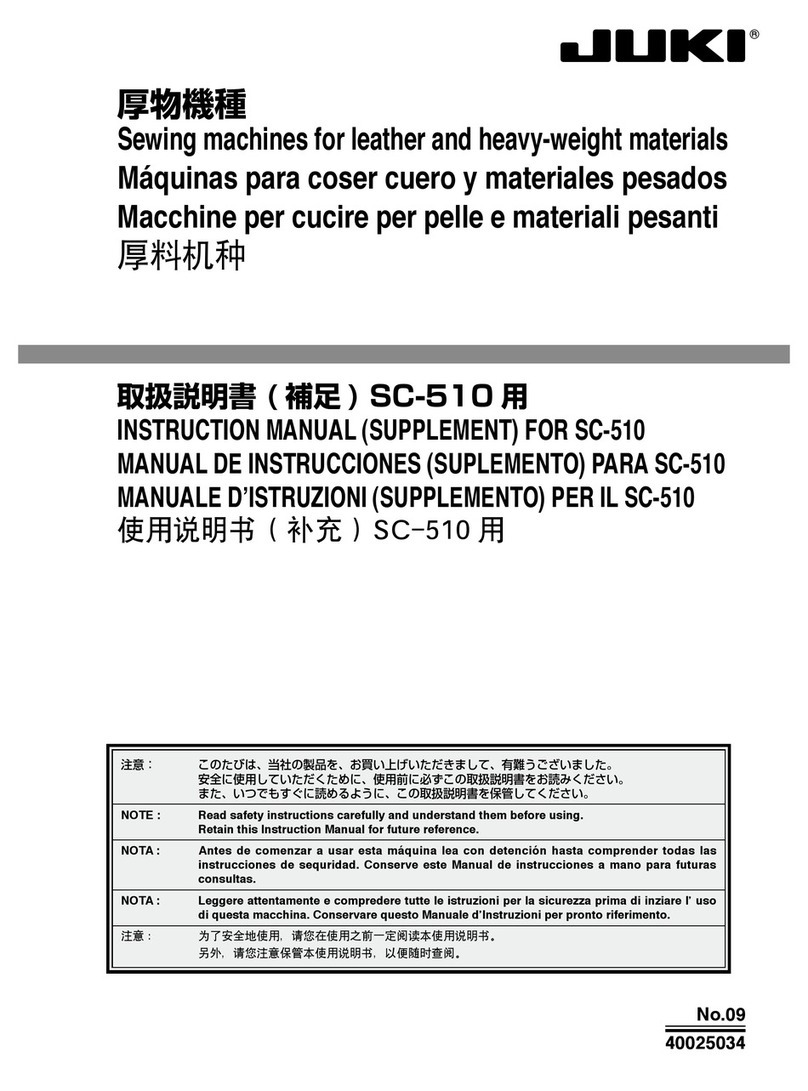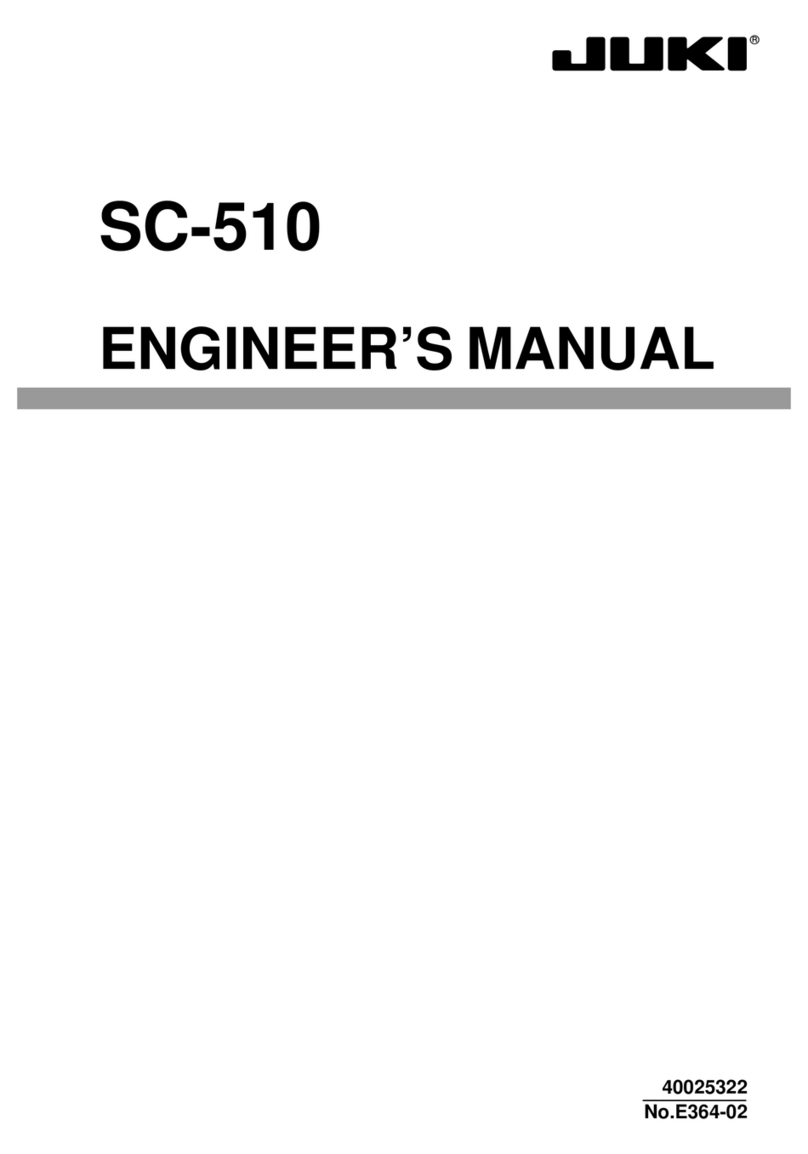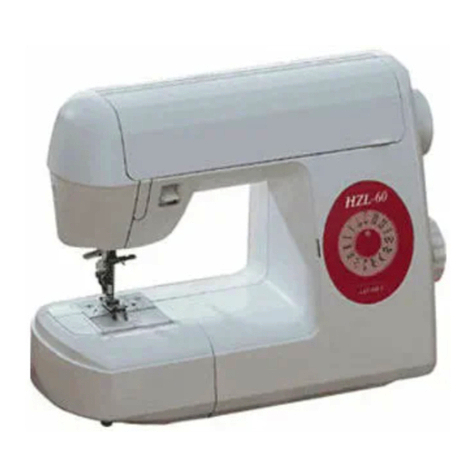(9) Disassembling/assembling of components ................................................................................. 55
1) Disassembling/assembling of the timing belt ........................................................................... 55
2) Disassembling/assembling of the throat plate ......................................................................... 69
3) Disassembling/assembling of the hook removing cross roller ................................................. 71
4) Disassembling/assembling of the ball spline ........................................................................... 73
[2] Device components.............................................................................................. 75
(1) Loop cut components .................................................................................................................. 75
1) Adjusting the height of the loop cut knife unit .......................................................................... 75
2) Adjusting the cross cut angle of the loop cut knife................................................................... 77
3) Adjusting the position of the loop cut center ............................................................................ 79
4) Changing the straight cutting ................................................................................................... 81
5) Adjusting the loop cut cylinder sensor ..................................................................................... 87
6) Adjusting the installation of the belt loop splice sensor............................................................ 89
(2) Loop clamp feed components ..................................................................................................... 93
1) Adjusting the loop clamp base plate front sensor .................................................................... 93
2) Adjusting the loop clamp base plate rear sensor ..................................................................... 95
3) Adjusting the loop clamp lever loop existence sensor ............................................................. 97
4) Adjusting the opening amount of the loop clamp base ............................................................ 99
5) Adjusting the position of the loop clamp feed unit.................................................................... 99
(3) Belt loop feed components ........................................................................................................ 101
1) Adjusting the height (clearance) of the loop feed roller.......................................................... 101
2) Adjusting the pressure of the loop feed roller ........................................................................ 103
3) Adjusting the tension of the loop feed roller belt .................................................................... 105
(4) Belt loop supply components .................................................................................................... 107
1) Adjusting the tension of the loop supply belt.......................................................................... 107
2) Adjusting the play in the rotation of the loop supply slide base ............................................. 109
3) Adjusting the loop supply slide base sensor .......................................................................... 111
4) Adjusting the height of the fork (up/down of this side and far side) ....................................... 113
5) Adjusting the height of the fork (up/down of the unit)............................................................. 115
6) Adjusting the position of the fork and the needle ................................................................... 117
(5) Adjusting the air speed controller .............................................................................................. 119
1) Cam up/down cylinder ........................................................................................................... 119
2) Belt presser removing base cylinder ...................................................................................... 119
3) Belt presser cylinder............................................................................................................... 119
4) Loop pull-out cylinder (Optional) ............................................................................................ 121
5) Fullness cylinder (Optional) ................................................................................................... 121
6) Needle cooler (Optional) ........................................................................................................ 121
(6) Adjusting the pressure reduction controller ............................................................................... 123
1) Loop folding cylinder .............................................................................................................. 123
(7) Disassembling/assembling ........................................................................................................ 125
1) Disassembling/assembling of the loop cut knife and the counter knife.................................. 125
2) Disassembling/assembling of the loop cut knife drive components ....................................... 127
3) Disassembling/assembling of the loop supply ....................................................................... 129
4) Disassembling/assembling of the loop supply cam components ........................................... 131
5) Disassembling/assembling of the loop supply belt components ............................................ 133
6) Disassembling/assembling of the loop supply unit ................................................................ 135
7) Disassembling/assembling of the loop feed roller components ............................................. 137
8) Disassembling/assembling of the belt presser unit ................................................................ 139
[8] Installing of the optional parts. ......................................................................... 141
1) Installing of the fullness device .............................................................................................. 141
2) Installing of the needle cooler ................................................................................................ 145
3) Installing of the thread breakage detector device .................................................................. 147
4) Installing of the loop pull-out device ....................................................................................... 149
5) Installing of the air gun ........................................................................................................... 151
